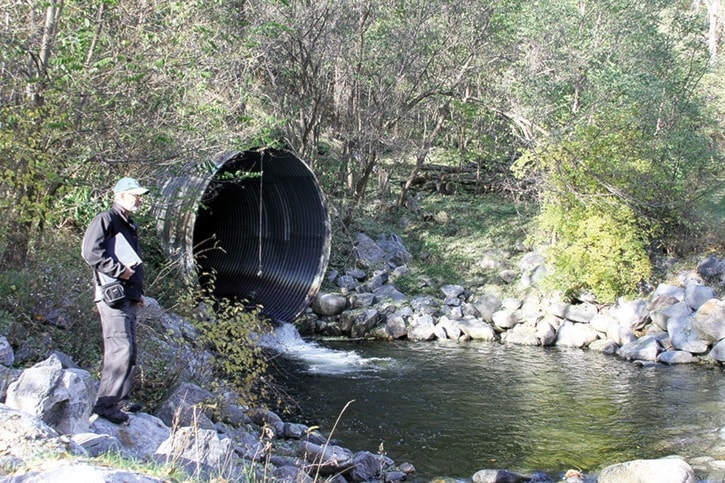The Trail Wildlife Association (TWA) is doing everything possible to see that the famed rainbow trout fishery on the Columbia River remains intact for generations to come.
The Murphy Creek spawning channel is getting a much needed upgrade thanks to the efforts of the TWA and its partnerships with environmental groups, local businesses, and J. L. Crowe students.
Project leader and TWA director Rob Frew began the prodigious task of acquiring permits, local licensing, private property holder’s permission, and environmental acquiescence over a year ago, but it wasn’t until early last week that the actual work on the stream adjacent to the Birchbank Golf Course started.
“I’m recently retired and thought well, it’s like any old infrastructure it needs some upgrade and improvement so that’s where we stepped in,” said Frew, a retired Teck environmental engineer.
TWA is a leader in habitat and species conservation in the area, and has been involved in the Murphy Creek spawning channel initiative since the mid-1980s, when TWA members first noticed rainbow trout attempting to spawn in a short section of Murphy Creek.
A large culvert on Hwy. 22 blocked passage of spawning trout to lower gradient sections of the stream more suitable for spawning. In the main channel below the highway, spawning habitat is minimal due to large cobble, a steep gradient, and high spring-freshet flows.
“Murphy Creek, since they put the new highway in, trout can’t get up that culvert during the spawning season because it’s too steep,” said Frew. “They start up and they get flushed right back out.”
To mitigate this, the group installed a piped intake and created a side-channel about 200-metres long with a series of pools and natural cover for additional spawning and rearing habitat. However, problems with the intake flow, sediment accumulation, and occasional low runoff would strand spawning beds (redds), so in 1999 a second intake was installed to increase flows to channel.
It has seen modest success over the years, with varying numbers of trout returning annually to spawn. Regular maintenance is required to maintain the value of the spawning channel, and integrity of the intakes. Minimal flow during spawning season is vital for rainbow trout redds, yet, as important is the ability to flush the system of debris and sediment to maintain the efficacy of the channel.
TWA’s Cara Adrain, a Master’s student at the University of Lethbridge, and biologist Michael Zimmer of Okanagan Nation Alliance have been valuable contributors to the project, says Frew. They conducted rainbow trout spawning surveys, identified spawning beds, and monitored temperature earlier this summer in preparation for the upgrades.
Water resource engineering firm, Kerr Wood Leidal Associates Ltd. designed a new system to replace the aging one and to improve flow for spawning habitat for rainbow trout.
Poised for installation is a new concrete headwall with a debris trash rack, and a hand-operated wheel to control flow to a 12-metre long, 600-mm diameter pipe.
It also includes improvements to the outlet and the settling pond, and thanks to the aid of J. L. Crowe students, Hil-tech Contracting, West Kootenay Mechanical, and West K Concrete, work on stream upgrades, cover, and structure began last week.
“Part of this package that we’ve got is to do the work, but also involve students from Crowe, to get them interested,” said Frew. “And it’s not just for the biology and that, but to see that an excavator operator is going to be part of this, you might need some tradesmen, like carpenters and pipe fitters. It will provide invaluable work-experience for Crowe students.”
The group effort is ongoing, and Frew expects the partnership to continue to improve and grow, much to the benefit and sustainability of the Columbia River rainbow trout, the education of Crowe students, and satisfaction of anglers everywhere.
